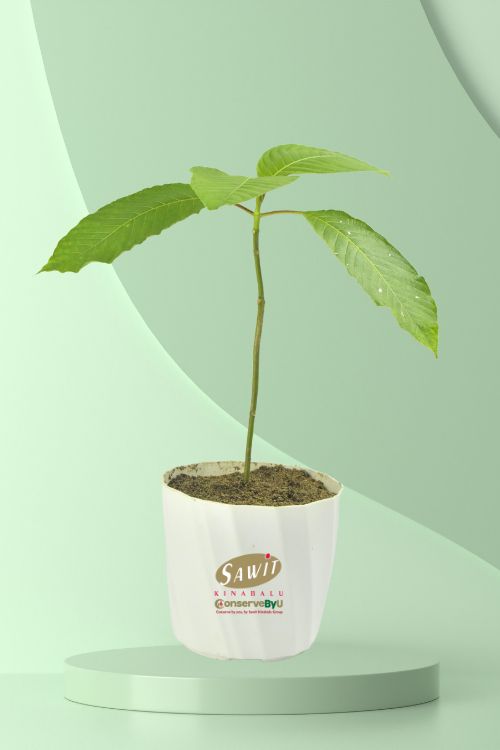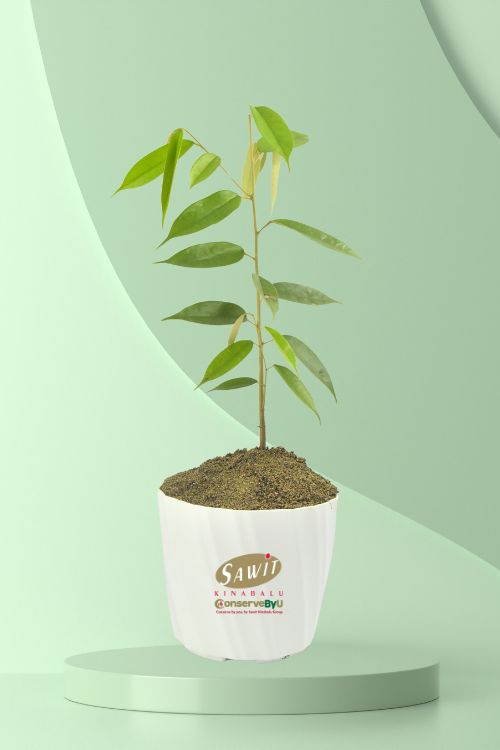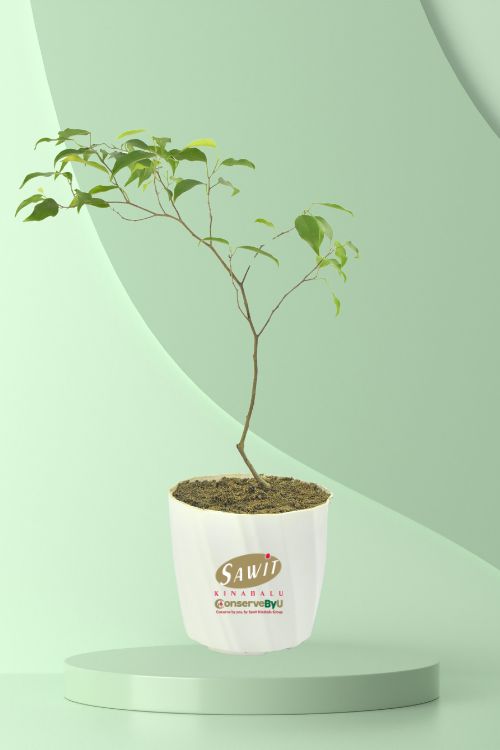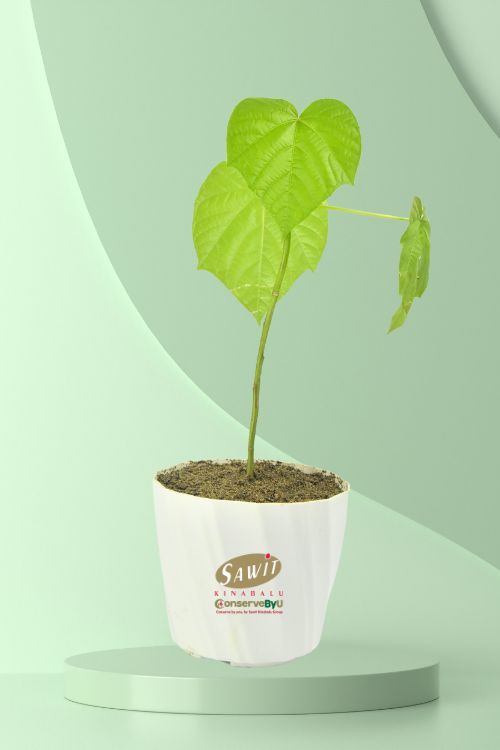| Tree Maintenance Support Duration | 1 Year, 2 Years, 3 Years, 4 Years, 5 Years |
|---|
From: RM30.00 / year
Neolamarckia cadamba, with English common names burflower-tree, laran, and Leichhardt pine,[2] and called kadam or cadamba[2] locally, is an evergreen, tropical tree native to South and Southeast Asia. The genus name honours French naturalist Jean-Baptiste Lamarck. It has scented orange flowers in dense globe-shaped clusters. The flowers are used in perfumes. The tree is grown as an ornamental plant and for timber and paper-making. Kadam features in Indian religions and mythologies.
A fully mature tree can reach up to 45 m (148 ft) in height.[3] It is a large tree with a broad crown and straight cylindrical bole. It is quick growing, with broad spreading branches and grows rapidly in the first 6–8 years. The trunk has a diameter of 100–160 cm, but typically less than that. Leaves are 13–32 cm (5.1–12.6 in) long.[3] Flowering usually begins when the tree is 4–5 years old.
Its flowers are sweetly fragrant, red to orange in colour, occurring in dense, globular heads of approximately 5.5 cm (2.2 in) diameter. The fruit of N. cadamba occur in small, fleshy capsules packed closely together to form a fleshy yellow-orange infructescence containing approximately 8000 seeds. On maturing, the fruit splits apart, releasing the seeds, which are then dispersed by wind or rain.[4][5]
- Stamens 5, inserted on the corolla tube, filaments short, anthers basifixed. Ovary inferior, bi-locular, sometimes 4-locular in the upper part, style exserted and a spindle-shaped stigma.
- Fruitlets numerous with their upper parts containing 4 hollow or solid structures. Seed trigonal or irregularly shaped.
- The sapwood is white with a light yellow tinge becoming creamy yellow on exposure and is not clearly differentiated from the heartwood.
How Does It Work

01.
Select tree and make payment.

02.
CBU prepare for tree planting.

03.
Tree is being planted.

04.
Certificate is prepared.

05.
Confirmation email will be delivered.
An automated email is sent out upon the purchase of trees to confirm your order. After the trees have been planted (in 4 weeks or less), an email containing the following will be sent out :
- One e-certificate
- One photograph per unit & GPS coordinates of the plot where the tree was planted on
- One year maintenance care for your planted tree







